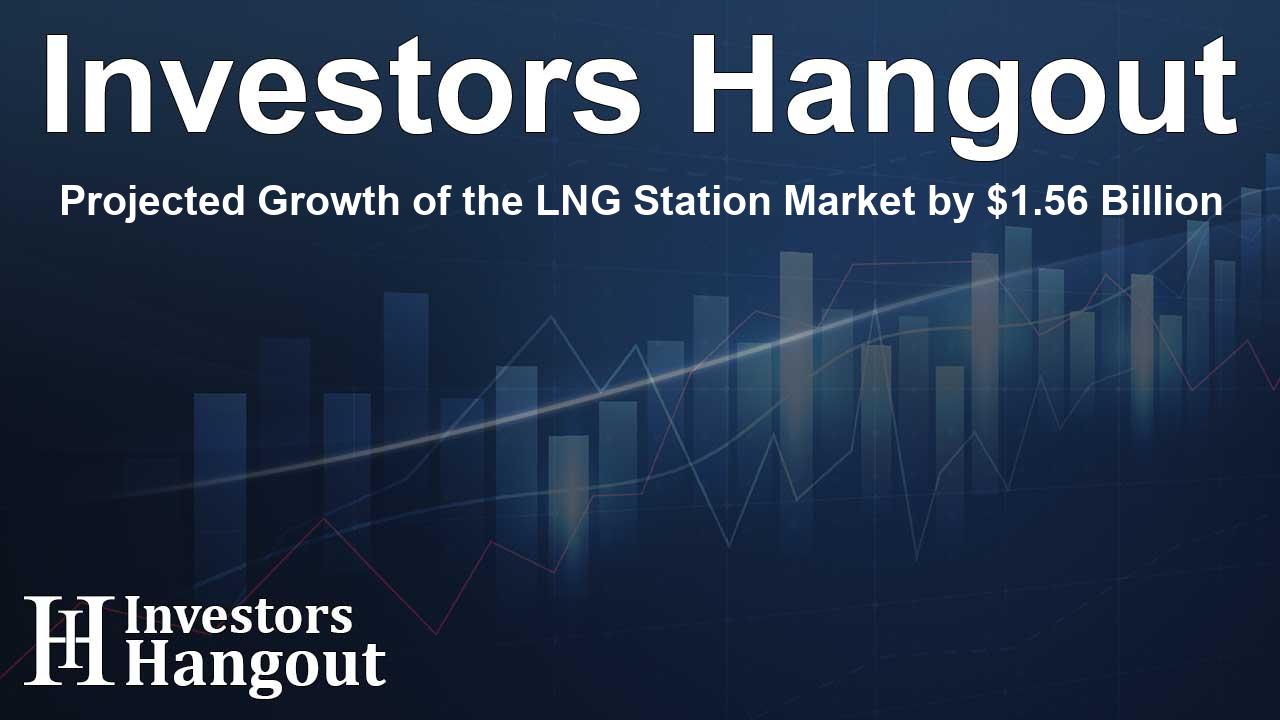Projected Growth of the LNG Station Market by $1.56 Billion

LNG Station Market Analysis and Growth Projections
The LNG Station Market is on an impressive trajectory, expected to rise from USD 1.02 billion to USD 1.56 billion by 2030. This growth, at a robust CAGR of 9.0%, highlights a significant shift in transportation fuels towards cleaner alternatives, particularly within the heavy-duty vehicle sector. The need to reduce greenhouse gas emissions fuels this momentum, as natural gas infrastructure develops rapidly and LNG technology becomes more widely adopted in commercial transport.
Drivers of Market Growth
One of the leading factors pushing this market forward is the need for efficient refueling options in logistics. LNG stations provide a low-emission, economically competitive option compared to traditional diesel fuels. Governments are becoming increasingly supportive of this transition, introducing policies that favor the establishment of LNG infrastructure. Public-private investments are crucial in this context, facilitating rapid development and deployment of LNG stations around the globe.
Environmental Impact and Regulations
With growing environmental awareness, regulations are tightening, pushing industries to comply with stricter emissions standards. These policies are instrumental in promoting LNG as a viable alternative fuel. The global push for cleaner transportation options is closely linked to sustainable urban planning and energy independence, giving a clear edge to LNG technology.
Market Segmentation Insights
The LNG Station Market can be categorized by various solutions, such as Engineering, Procurement, and Construction (EPC) services and components. The EPC segment currently leads, driven by a growing demand for integrated and efficient project execution from planning through to completion. This focus on turnkey solutions caters to the increasing investments in LNG infrastructure, especially in rapidly developing economies where project execution risks must be minimized.
Regional Report Highlights
In terms of geographical trends, the Asia Pacific region is in the lead, spurred by rapid industrialization and the expansion of transportation networks. Efforts in environmental sustainability and governmental promotions of LNG usage are key drivers in countries like China and India. China notably has built substantial LNG infrastructure, supported by both state-owned enterprises and favorable policy initiatives, which subsequently boosts the market.
Station Types and Their Importance
When it comes to station type, fixed LNG stations dominate the market. Their design and infrastructure cater specifically to high-demand fueling operations characteristic of heavy-duty transport applications. These stations are strategically placed at key transport routes and industrial areas to offer both reliability and access.
Technological Advancements in LNG Stations
Technological improvements play a major role in enhancing the operational efficiency of LNG stations. Innovations in cryogenic systems and automation not only improve the customer experience but also significantly lower operational costs, paving the way for wider adoption of this clean fuel type globally.
Future Outlook: Europe and Global Trends
Europe is poised to witness the most rapid growth in the LNG Station Market, largely driven by stringent environmental regulations and a concerted government effort towards cleaner energy solutions. Increased adoption in heavy-duty transport and marine sectors confirms LNG's pivotal role as the region shifts towards a more sustainable transportation framework.
Who Are the Key Players in the Industry?
Major players shaping the LNG Station Market include entities like CNPC, Shell Plc, and Chart Industries. These companies employ various strategies, including acquisitions and product innovations, to strengthen their positions in the market. Their efforts are critical in meeting the growing global demand for cleaner fuels.
Frequently Asked Questions
What factors are driving the growth of the LNG Station Market?
The growth is predominantly driven by the need for cleaner transportation fuels, government regulations on emissions, and increased investments in LNG infrastructure.
Which regions are leading the LNG Station Market?
Asia Pacific currently leads the market due to strong industrial growth and environmental initiatives, followed closely by Europe.
What are the types of LNG stations?
LNG stations are typically categorized into fixed and mobile types, with fixed stations being more common for heavy-duty and long-term operations.
How does LNG contribute to reducing emissions?
LNG offers a low-emission alternative to traditional fuels like diesel, significantly reducing greenhouse gas emissions from transportation.
Who are the major players in the LNG Station Market?
Key companies include CNPC, Shell Plc, and Chart Industries, among others, which implement various market strategies to expand their reach.
About The Author
Contact Logan Wright privately here. Or send an email with ATTN: Logan Wright as the subject to contact@investorshangout.com.
About Investors Hangout
Investors Hangout is a leading online stock forum for financial discussion and learning, offering a wide range of free tools and resources. It draws in traders of all levels, who exchange market knowledge, investigate trading tactics, and keep an eye on industry developments in real time. Featuring financial articles, stock message boards, quotes, charts, company profiles, and live news updates. Through cooperative learning and a wealth of informational resources, it helps users from novices creating their first portfolios to experts honing their techniques. Join Investors Hangout today: https://investorshangout.com/
The content of this article is based on factual, publicly available information and does not represent legal, financial, or investment advice. Investors Hangout does not offer financial advice, and the author is not a licensed financial advisor. Consult a qualified advisor before making any financial or investment decisions based on this article. This article should not be considered advice to purchase, sell, or hold any securities or other investments. If any of the material provided here is inaccurate, please contact us for corrections.
